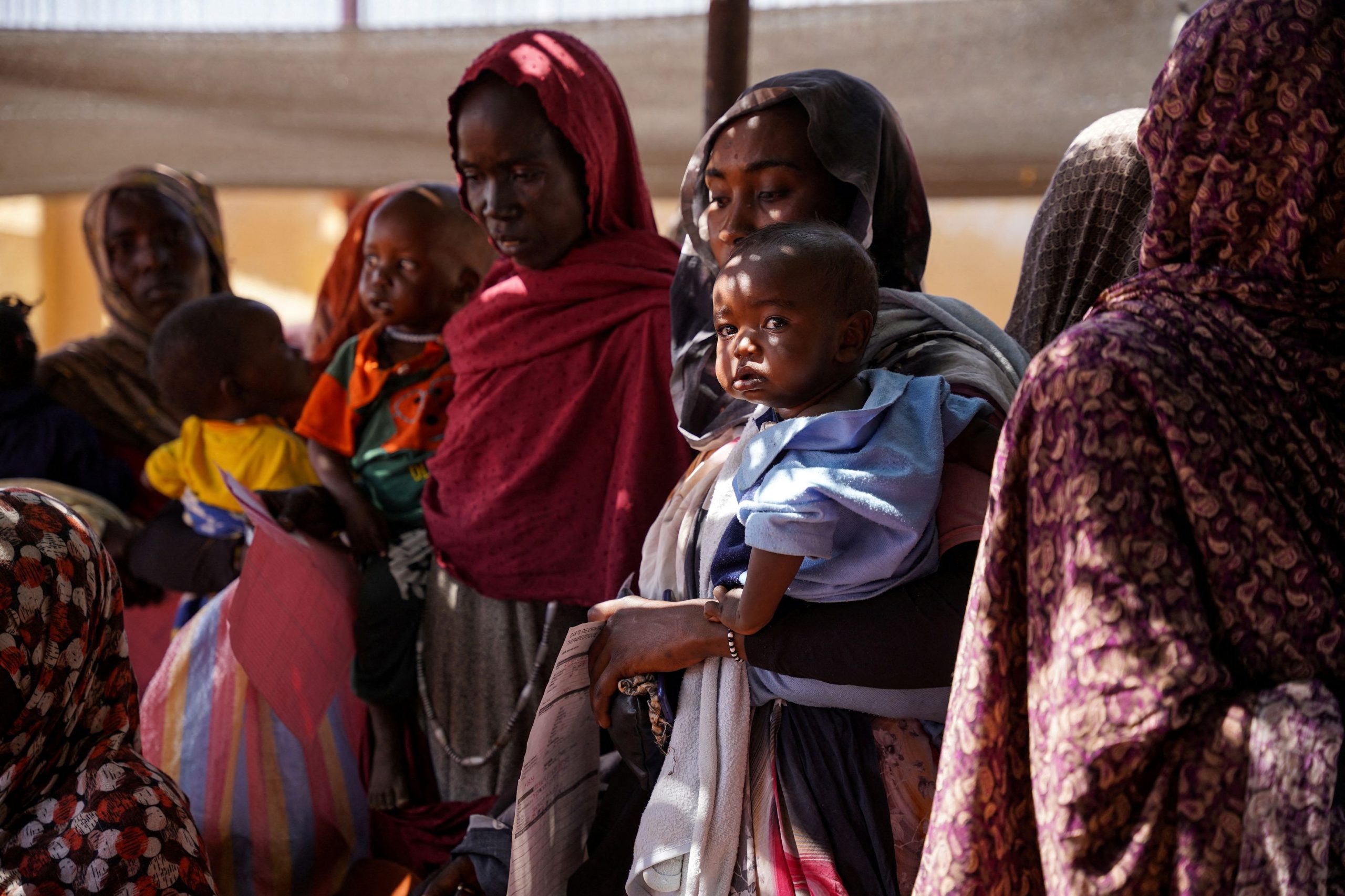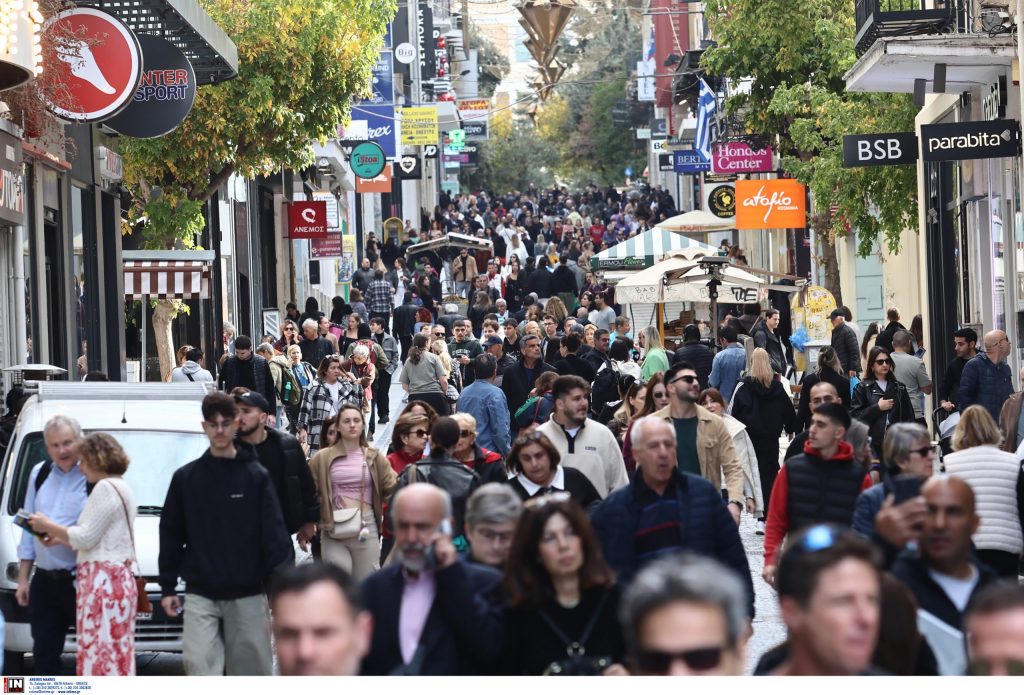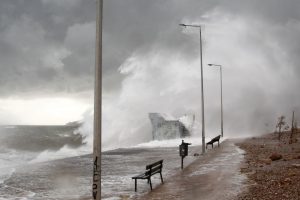Every day, emaciated children are dying from lack of food, clean water and medicine. Aid groups are rationing malnutrition treatments. Desperate mothers are feeding their children with leaves, while others are sheltering in knee-deep water as floods worsen.
These are the dystopian conditions inside the Zamzam displacement camp in Sudan’s Darfur region, home to more than 500,000 people and now the site of the world’s first confirmed famine since 2017.
Two international panels monitoring hunger around the world made the official declaration that famine had taken hold in Zamzam last week, nearly 16 months after war broke out between Sudan’s military and its former ally, the paramilitary-turned-rebel Rapid Support Forces.
Zamzam and other displacement camps around the Darfur city of El Fasher, set up after the genocide of the early 2000s, are ground zero of a starvation crisis that has swept through Sudan since the start of the war last year. Some 26 million Sudanese, about half the country’s population, are suffering crisis levels of hunger, according to the Integrated Food Security Phase Classification, or IPC, which brings together experts from the United Nations, relief agencies and research groups.
Aid groups and the U.S. government say the crisis is entirely man-made.
Sudan’s military has closed off all but one official border crossing into Darfur for imports of humanitarian aid, arguing that it needs to stop weapons from reaching its enemy. Relief that does make it into Darfur has been held up by the RSF, a successor force to the Janjaweed fighters that terrorized the region two decades ago, or blocked by heavy fighting around the city.
Also, severe rain has flooded key access routes to El Fasher, as well as infrastructure inside Zamzam, including latrines, water distribution points and the camp’s malnutrition ward.
“We have been surviving on water and leaves,” Mastoura Saleh Mahmoud said in a phone interview from Zamzam, conducted on Sunday during a rare moment when telecommunications networks functioned in the camp.
Mahmoud, 38 years old, said two of her seven children—3-year-old Iman Abdulla and 5-year-old Zura Amin—died in June after the family spent weeks with little to no food. Both contracted infections causing diarrhea and skin rashes, and Mahmoud said she couldn’t find drugs or medical care in the camp.
Mahmoud brought her children to Zamzam in early May from another sprawling El Fasher settlement, known as Abu Shouk, after an artillery shell tore through their home, killing her husband and burning the family’s meager belongings. Now, she says, she worries about her five surviving children, who she says have grown sickly and weak.
On Sunday, Mahmoud received 2 kilograms of sorghum flour and 2 kilograms of beans from Team Zamzam, a Sudanese volunteer group that operates in the camp. The World Food Program, the U.N. agency that distributes most of the world’s food aid, says it hasn’t been able to reach Zamzam since April, when clashes between the RSF and the military escalated around El Fasher.
Doctors Without Borders, which runs a health center and field hospital in Zamzam, said it has stopped distributing high-calorie therapeutic food to children suffering from moderate malnutrition, so it could focus on those with severe malnutrition. Even so, the group said it would run out of the lifesaving treatment altogether in the next two weeks, unless the RSF releases three trucks filled with medical supplies that have been blocked some 100 miles from El Fasher for more than a month.
A spokesman for the RSF didn’t respond to a request for comment on why the trucks are being held.
Like most foreign aid groups, Doctors Without Borders, which is known by its French initials MSF, pulled international staff from Zamzam in May and hasn’t been able to update a survey of deaths and malnutrition levels inside the camp. During its last survey in January, when there was little fighting around El Fasher, it found that on average a child died in Zamzam every two hours.
More than 100 children under age 5 are in MSF’s malnutrition ward in Zamzam, even though the facility only has 79 beds, said Claire Nicolet, who heads the group’s emergency response for Sudan from Paris. This weekend, staff had to move the children, some of whom were already sharing beds, into tents after the ward was flooded by fetid water, she said.
“Of course, every time that there are floods, it comes with diseases as well,” said Nicolet.
Omar Isa Mohamed, a longtime resident of the camp who volunteers for Team Zamzam, said some newly arrived families are now sheltering in schools that are partially submerged in water.
Team Zamzam, as is the case with other Sudanese aid groups working in the camp, raises money online and buys supplies from local traders who brave the dangerous roads to reach the city. Prices for some staples such as sorghum or beans have increased fivefold since last year, Mohamed said.
“We are prioritizing small children,” he said. “The numbers are overwhelming.”
Formal famine declarations are rare and usually require detailed data showing that at least 20% of households face extreme food shortages, one-in-three children suffer from acute malnutrition, and two out of every 10,000 people die daily from the effects of hunger. The last time the IPC had formally declared a famine was in South Sudan in 2017 .
The IPC and the U.S.-funded Famine Early Warning Systems Network, the international panels that declared famine in Zamzam, said two other displacement camps near El Fasher, Abu Shouk and Al Salam, were likely also experiencing famine, but they didn’t have sufficient information to make a formal assessment for them.
The IPC said that because of the difficulties accessing Zamzam, it had to work with older data and extrapolate based on information from similar camps. Complicating matters, the group said, it is unclear how many people live in Zamzam today, as new arrivals had driven up the camp’s prewar population of around 400,000 to at least 500,000 and, potentially, as many as 800,000 people.
Zahra Adam Abdullah, 40, said she and her nine children fled to Zamzam from El Fasher after her 17-year-old son, Muhammad Fathi, was injured by gunfire and his right leg was amputated above the knee. Now, his leg is infected and she has no food or medication to help him heal.
“We have nothing to eat, and my son’s wound is rotting,” Abdullah said.
Write to Nicholas Bariyo at nicholas.bariyo@wsj.com and Gabriele Steinhauser at Gabriele.Steinhauser@wsj.com



